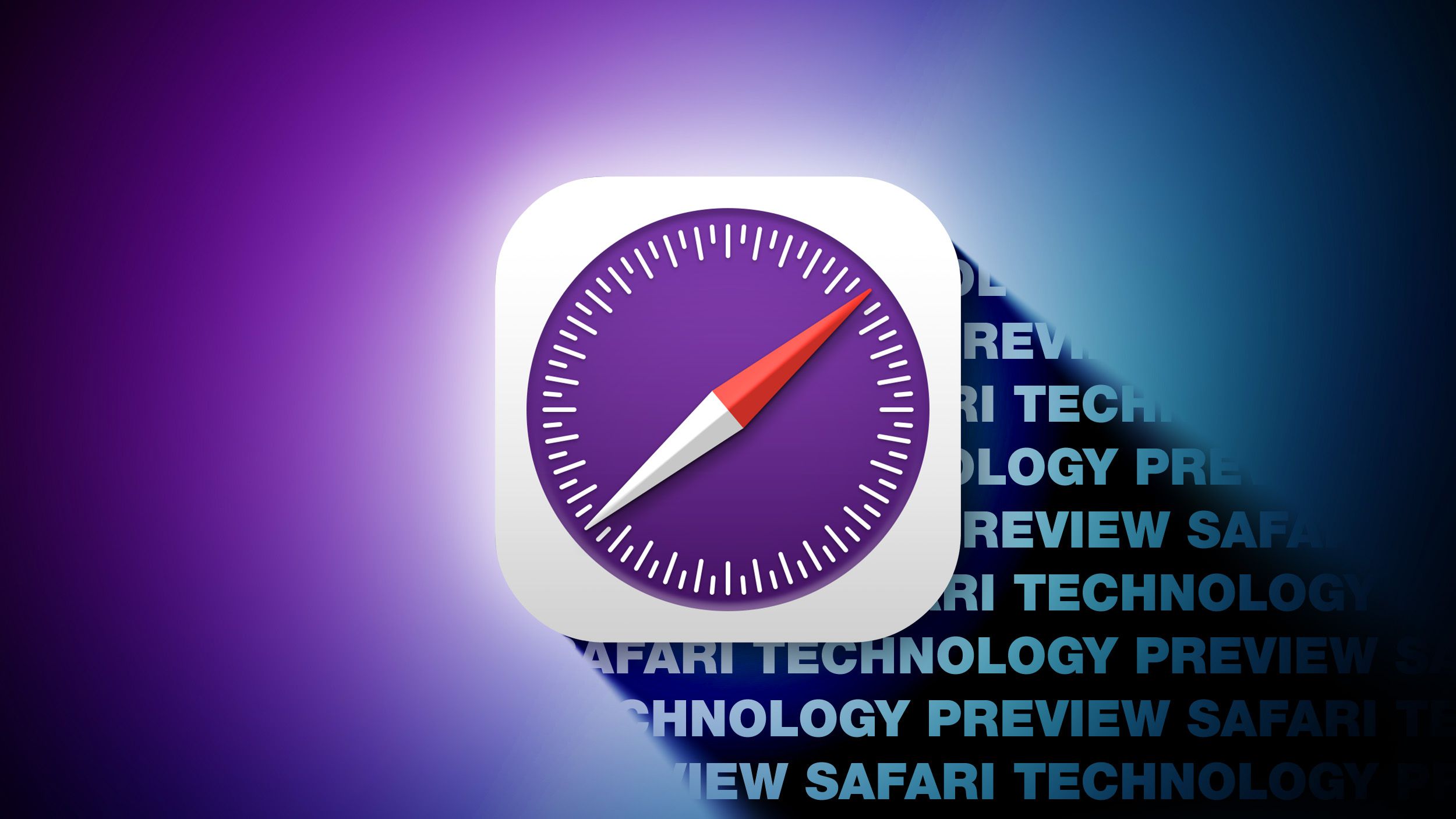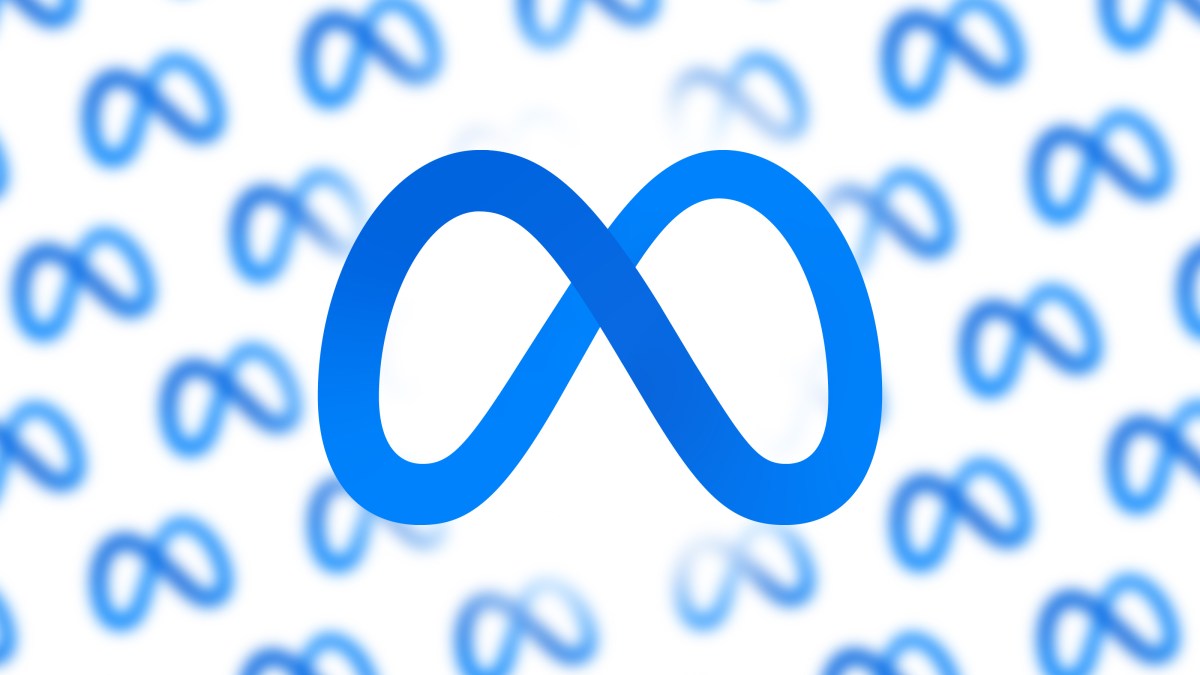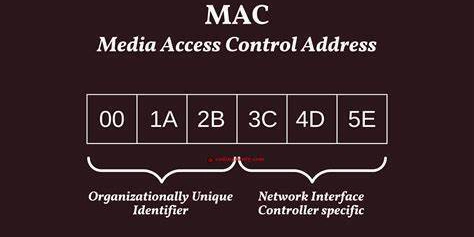OCR Best Practices for Different Document Types
OCR Best Practices for Different Document Types Optical Character Recognition (OCR) is not a one-size-fits-all technology. Different document types present unique challenges and require specific approaches to achieve optimal results. From text-heavy books to complex invoices, from historical manuscripts to technical diagrams, each document category benefits from tailored OCR strategies that address its particular characteristics and requirements. This comprehensive guide explores best practices for applying OCR to various document types, helping you optimise your approach for maximum accuracy, efficiency, and usability across diverse materials. Understanding Document-Specific OCR Challenges Before diving into specific document types, let's understand the key factors that influence OCR effectiveness: Document Characteristics That Impact OCR Layout Complexity Factors: Single vs. multi-column text Fixed vs. variable positioning Linear vs. non-linear reading order Consistent vs. varied formatting Simple vs. complex page structures Content Type Variations: Text-only vs. mixed content Standard vs. specialised terminology Common vs. unusual fonts Uniform vs. varied text styles Consistent vs. mixed languages Physical and Visual Qualities: Print vs. handwritten content High vs. low contrast Clean vs. degraded condition Modern vs. historical materials Digital-born vs. scanned documents The Value of Document-Specific Approaches Accuracy Improvement Benefits: Higher recognition rates Fewer errors requiring correction Better handling of special cases Improved contextual interpretation More reliable results overall Efficiency Enhancement: Faster processing with optimised settings Reduced exception handling Streamlined workflows Lower manual intervention requirements More predictable outcomes Output Quality Advantages: Better preservation of document structure More accurate formatting retention Improved metadata extraction Enhanced searchability More usable end results Text-Heavy Documents Best practices for books, articles, and text-dominant materials: Books and Long-Form Content Preparation and Scanning: 300-400 DPI resolution for standard text Careful page flattening for bound volumes Consistent lighting across pages Colour scanning for annotated works Complete capture of page content Processing Configuration: Book-specific layout analysis Page sequence maintenance Chapter and section structure recognition Footnote and endnote handling Header and footer consistency Post-Processing Considerations: Table of contents reconstruction Index linking and preservation Chapter and section marking Reading order verification Consistent formatting application Academic and Research Papers Special Considerations: Multi-column layout handling Mathematical equation recognition Citation and reference preservation Figure and table caption processing Abstract and section identification Optimisation Approaches: Academic template application Scientific terminology dictionaries Formula and equation mode activation Citation format preservation Reference list structure maintenance Output Enhancement: Citation linking capabilities Reference list structuring Figure and table relationship preservation Metadata extraction for academic indexing Discipline-specific terminology handling Manuals and Technical Documentation Structure Preservation: Hierarchical heading recognition Numbered list maintenance Step sequence preservation Warning and note box handling Technical diagram integration Content-Specific Optimisation: Technical terminology dictionaries Product name and number recognition Measurement and unit handling Code and programming text preservation Symbol and notation recognition Usability Enhancement: Cross-reference linking Table of contents navigation Procedure step preservation Technical index creation Searchable technical terms Forms and Structured Documents Best practices for documents with defined fields and layouts: Fixed-Layout Forms Template-Based Approaches: Form template creation and registration Field zone definition Data type specification Checkbox and selection recognition Form identification automation Processing Optimisation: Form alignment and registration Field-specific recognition settings Data type validation rules Required field verification Consistent multi-page handling Data Extraction Enhancement: Field naming standardisation Data format normalisation Validation rule application Relationship verification Structured data output creation Variable-Layout Forms Intelligent Form Recognition: Key anchor point identification Relative position mapping Label-based field detection Flexible form registration Variant handling capabilities Processing Strategies: Form classification before pro
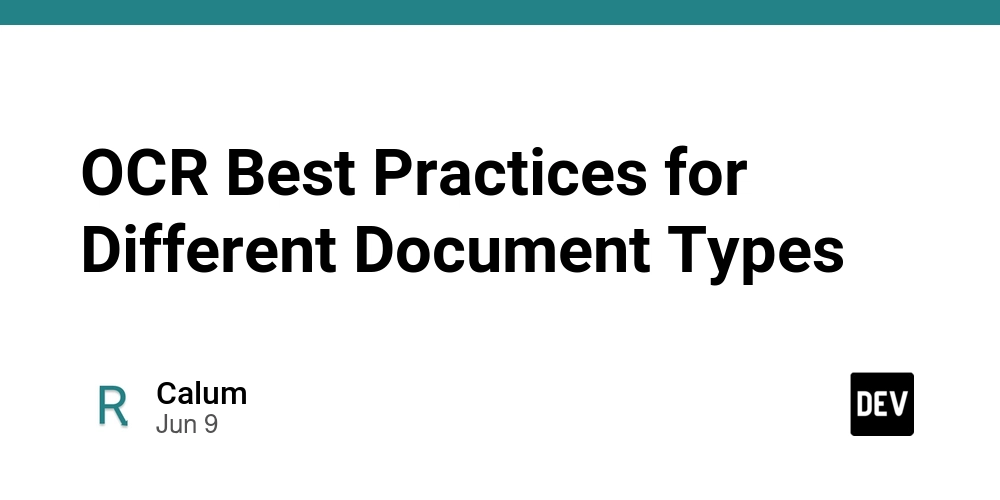
OCR Best Practices for Different Document Types
Optical Character Recognition (OCR) is not a one-size-fits-all technology. Different document types present unique challenges and require specific approaches to achieve optimal results. From text-heavy books to complex invoices, from historical manuscripts to technical diagrams, each document category benefits from tailored OCR strategies that address its particular characteristics and requirements.
This comprehensive guide explores best practices for applying OCR to various document types, helping you optimise your approach for maximum accuracy, efficiency, and usability across diverse materials.
Understanding Document-Specific OCR Challenges
Before diving into specific document types, let's understand the key factors that influence OCR effectiveness:
Document Characteristics That Impact OCR
-
Layout Complexity Factors:
- Single vs. multi-column text
- Fixed vs. variable positioning
- Linear vs. non-linear reading order
- Consistent vs. varied formatting
- Simple vs. complex page structures
-
Content Type Variations:
- Text-only vs. mixed content
- Standard vs. specialised terminology
- Common vs. unusual fonts
- Uniform vs. varied text styles
- Consistent vs. mixed languages
-
Physical and Visual Qualities:
- Print vs. handwritten content
- High vs. low contrast
- Clean vs. degraded condition
- Modern vs. historical materials
- Digital-born vs. scanned documents
The Value of Document-Specific Approaches
-
Accuracy Improvement Benefits:
- Higher recognition rates
- Fewer errors requiring correction
- Better handling of special cases
- Improved contextual interpretation
- More reliable results overall
-
Efficiency Enhancement:
- Faster processing with optimised settings
- Reduced exception handling
- Streamlined workflows
- Lower manual intervention requirements
- More predictable outcomes
-
Output Quality Advantages:
- Better preservation of document structure
- More accurate formatting retention
- Improved metadata extraction
- Enhanced searchability
- More usable end results
Text-Heavy Documents
Best practices for books, articles, and text-dominant materials:
Books and Long-Form Content
-
Preparation and Scanning:
- 300-400 DPI resolution for standard text
- Careful page flattening for bound volumes
- Consistent lighting across pages
- Colour scanning for annotated works
- Complete capture of page content
-
Processing Configuration:
- Book-specific layout analysis
- Page sequence maintenance
- Chapter and section structure recognition
- Footnote and endnote handling
- Header and footer consistency
-
Post-Processing Considerations:
- Table of contents reconstruction
- Index linking and preservation
- Chapter and section marking
- Reading order verification
- Consistent formatting application
Academic and Research Papers
-
Special Considerations:
- Multi-column layout handling
- Mathematical equation recognition
- Citation and reference preservation
- Figure and table caption processing
- Abstract and section identification
-
Optimisation Approaches:
- Academic template application
- Scientific terminology dictionaries
- Formula and equation mode activation
- Citation format preservation
- Reference list structure maintenance
-
Output Enhancement:
- Citation linking capabilities
- Reference list structuring
- Figure and table relationship preservation
- Metadata extraction for academic indexing
- Discipline-specific terminology handling
Manuals and Technical Documentation
-
Structure Preservation:
- Hierarchical heading recognition
- Numbered list maintenance
- Step sequence preservation
- Warning and note box handling
- Technical diagram integration
-
Content-Specific Optimisation:
- Technical terminology dictionaries
- Product name and number recognition
- Measurement and unit handling
- Code and programming text preservation
- Symbol and notation recognition
-
Usability Enhancement:
- Cross-reference linking
- Table of contents navigation
- Procedure step preservation
- Technical index creation
- Searchable technical terms
Forms and Structured Documents
Best practices for documents with defined fields and layouts:
Fixed-Layout Forms
-
Template-Based Approaches:
- Form template creation and registration
- Field zone definition
- Data type specification
- Checkbox and selection recognition
- Form identification automation
-
Processing Optimisation:
- Form alignment and registration
- Field-specific recognition settings
- Data type validation rules
- Required field verification
- Consistent multi-page handling
-
Data Extraction Enhancement:
- Field naming standardisation
- Data format normalisation
- Validation rule application
- Relationship verification
- Structured data output creation
Variable-Layout Forms
-
Intelligent Form Recognition:
- Key anchor point identification
- Relative position mapping
- Label-based field detection
- Flexible form registration
- Variant handling capabilities
-
Processing Strategies:
- Form classification before processing
- Adaptive field location
- Label-value pair association
- Context-based field identification
- Flexible table extraction
-
Quality Enhancement:
- Confidence scoring for variable fields
- Alternative interpretation consideration
- Context-based validation
- Human verification integration
- Learning from corrections
Surveys and Questionnaires
-
Special Considerations:
- Multiple choice recognition
- Checkbox and bubble detection
- Rating scale interpretation
- Free-text field handling
- Respondent identification
-
Processing Approaches:
- Answer option mapping
- Selection mark detection optimisation
- Handwritten comment extraction
- Response pattern recognition
- Survey structure preservation
-
Data Analysis Preparation:
- Response coding automation
- Statistical format output
- Demographic data structuring
- Comment text extraction
- Survey metadata preservation
Financial and Business Documents
Best practices for invoices, receipts, and commercial materials:
Invoices and Billing Documents
-
Key Field Identification:
- Vendor information extraction
- Invoice number and date capture
- Amount and total recognition
- Payment term identification
- Tax and fee extraction
-
Line Item Processing:
- Table structure recognition
- Product/service description extraction
- Quantity and unit price capture
- Discount and adjustment handling
- Subtotal and total verification
-
Vendor-Specific Optimisation:
- Vendor template creation
- Format-specific processing rules
- Recurring invoice learning
- Vendor-specific field mapping
- Historical pattern recognition
Receipts and Point-of-Sale Documents
-
Format Challenges:
- Thermal paper quality issues
- Narrow format handling
- Varied font and style management
- Logo and graphic separation
- Fading text recovery
-
Data Extraction Focus:
- Merchant identification
- Date and time capture
- Total amount recognition
- Payment method identification
- Item and price extraction
-
Processing Optimisation:
- Receipt-specific enhancement
- Thermal paper image processing
- Currency and number format handling
- Item grouping and categorisation
- Tax and tip calculation verification
Contracts and Legal Documents
-
Structure Preservation:
- Section and clause identification
- Numbered paragraph maintenance
- Hierarchical structure recognition
- Signature block identification
- Appendix and exhibit handling
-
Content-Specific Approaches:
- Legal terminology dictionaries
- Party name extraction
- Date and deadline recognition
- Obligation and requirement identification
- Definition section handling
-
Output Enhancement:
- Table of contents linking
- Cross-reference preservation
- Defined term highlighting
- Signature and execution verification
- Amendment and modification tracking
Technical and Specialised Documents
Best practices for materials with complex notation and structure:
Engineering Drawings and Diagrams
-
Mixed Content Handling:
- Text vs. graphic separation
- Dimension and measurement extraction
- Label and callout recognition
- Legend and key processing
- Scale and unit identification
-
Technical Text Recognition:
- Engineering symbol dictionaries
- Measurement and tolerance extraction
- Part number recognition
- Specification text identification
- Revision and version marking
-
Output Considerations:
- Drawing structure preservation
- Text-graphic relationship maintenance
- Searchable technical notation
- Dimension and measurement accessibility
- Reference designation indexing
Scientific and Medical Documents
-
Specialised Content Recognition:
- Scientific notation handling
- Chemical formula recognition
- Mathematical equation processing
- Biological naming conventions
- Medical terminology dictionaries
-
Complex Layout Management:
- Multi-column scientific format
- Figure and table integration
- Citation and reference handling
- Abstract and methodology structure
- Result and discussion organisation
-
Domain-Specific Enhancement:
- Discipline-specific dictionaries
- Unit and measurement standardisation
- Formula and equation searchability
- Citation network preservation
- Terminology standardisation
Maps and Geographical Documents
-
Special Considerations:
- Place name recognition
- Coordinate and grid reference extraction
- Legend and symbol key processing
- Scale and distance information
- Direction and orientation indicators
-
Processing Approaches:
- Text vs. cartographic element separation
- Orientation-independent text recognition
- Small text enhancement
- Curved and angled text handling
- Layered information extraction
-
Output Optimisation:
- Geospatial metadata extraction
- Place name indexing
- Coordinate searchability
- Legend element structuring
- Map feature cataloguing
Historical and Degraded Materials
Best practices for older or damaged documents:
Historical Manuscripts and Books
-
Condition-Specific Approaches:
- Historical paper enhancement
- Faded ink recovery
- Bleed-through suppression
- Stain and damage compensation
- Binding and fold handling
-
Historical Text Recognition:
- Period-specific font models
- Historical spelling dictionaries
- Archaic character recognition
- Abbreviation and contraction handling
- Historical language models
-
Preservation Considerations:
- Non-destructive handling
- Colour and texture preservation
- Marginalia and annotation capture
- Historical context maintenance
- Original appearance documentation
Aged Business Records
-
Material Challenges:
- Faded carbon copies
- Mimeograph and ditto reproduction
- Typewriter text variations
- Rubber stamp impressions
- Handwritten annotations
-
Processing Strategies:
- Multi-pass enhancement
- Adaptive binarisation techniques
- Pattern-based recognition
- Context-assisted interpretation
- Period-specific terminology handling
-
Content Recovery Focus:
- Business entity identification
- Date and chronology extraction
- Financial figure recovery
- Transaction type classification
- Business relationship documentation
Damaged and Degraded Documents
-
Image Recovery Techniques:
- Tear and damage digital repair
- Water damage compensation
- Crease and fold correction
- Fragment reassembly support
- Missing content estimation
-
Recognition Enhancement:
- Partial character reconstruction
- Context-based completion
- Pattern matching for damaged text
- Alternative interpretation consideration
- Confidence-based result handling
-
Practical Approaches:
- Critical content prioritisation
- Multiple processing attempts
- Alternative enhancement methods
- Human verification integration
- Partial result documentation
Mixed Content Documents
Best practices for materials combining text with other elements:
Magazines and Brochures
-
Layout Complexity Management:
- Multi-zone page analysis
- Text flow reconstruction
- Sidebar and callout handling
- Caption and headline identification
- Advertisement separation
-
Mixed Content Processing:
- Text vs. image separation
- Background removal for text clarity
- Decorative element handling
- Colour text recognition
- Varied font style management
-
Output Structure Enhancement:
- Article boundary preservation
- Image-text relationship maintenance
- Reading order optimisation
- Section and feature identification
- Publication metadata extraction
Reports with Charts and Graphics
-
Element Separation Strategies:
- Text vs. chart identification
- Figure and illustration isolation
- Table structure recognition
- Caption and label extraction
- Footnote and reference handling
-
Processing Approaches:
- Zone-based recognition configuration
- Chart text specific enhancement
- Table structure preservation
- Small text in graphics recovery
- Data label extraction
-
Content Relationship Preservation:
- Figure and caption association
- Chart and explanation linking
- Table and reference connection
- Visual element positioning
- Cross-reference maintenance
Presentations and Slides
-
Format-Specific Considerations:
- Slide boundary recognition
- Bullet point hierarchy preservation
- Title and body text separation
- Speaker notes handling
- Animation text capture
-
Visual Element Management:
- Text overlay on graphics
- Diagram and chart text extraction
- SmartArt and visual list processing
- Background vs. content separation
- Slide number and header/footer handling
-
Output Optimisation:
- Slide sequence preservation
- Presentation structure maintenance
- Speaker note association
- Visual hierarchy retention
- Searchable presentation content
Using RevisePDF for Different Document Types
Leveraging online tools for document-specific OCR:
Document Type Selection and Configuration
-
Document Analysis Features:
- Visit RevisePDF.com
- Upload your document
- Select appropriate document type
- Configure type-specific settings
- Apply optimised processing
-
Customisation Options:
- Document category selection
- Language and content specification
- Layout analysis adjustment
- Recognition priority setting
- Output format customisation
-
Processing Profiles:
- Pre-configured document type settings
- Custom profile creation
- Setting combination optimisation
- Profile saving for reuse
- Batch application to similar documents
Document-Specific Processing
-
Text Document Optimisation:
- Book and article-specific settings
- Academic paper configuration
- Manual and documentation options
- Report and publication settings
- Text-heavy document enhancement
-
Form and Business Document Processing:
- Form recognition configuration
- Invoice and receipt processing
- Financial document optimisation
- Contract and legal document handling
- Business record enhancement
-
Specialised Content Handling:
- Technical document settings
- Historical material processing
- Mixed content document handling
- Damaged document recovery
- Special case configuration
Output Optimisation by Document Type
-
Format Selection Guidance:
- Searchable PDF for reference materials
- Word format for editable documents
- Data formats for forms and structured content
- HTML for web publication
- Text for content extraction
-
Structure Preservation Options:
- Layout retention settings
- Formatting preservation controls
- Table and list structure maintenance
- Image and graphic handling
- Document element relationships
-
Enhancement Features:
- Document type-specific cleanup
- Format-appropriate post-processing
- Structure enhancement options
- Metadata extraction capabilities
- Output validation and verification
Quality Management Across Document Types
Ensuring optimal results for all materials:
Document-Specific Quality Assessment
-
Accuracy Evaluation Approaches:
- Content type-appropriate sampling
- Critical field verification
- Structure preservation assessment
- Format-specific error checking
- Purpose-based quality evaluation
-
Common Error Patterns by Type:
- Text document flow issues
- Form field misidentification
- Table structure problems
- Historical character confusion
- Technical notation errors
-
Quality Metric Development:
- Document type-specific benchmarks
- Purpose-appropriate standards
- Critical error definition
- Acceptable quality thresholds
- Continuous improvement targets
Correction and Enhancement Strategies
-
Document-Appropriate Correction:
- Text flow and paragraph repair
- Form field value correction
- Table structure adjustment
- Technical content verification
- Historical text interpretation
-
Efficiency-Focused Approaches:
- Error pattern batch correction
- Structure-based content verification
- Format-specific validation rules
- Purpose-driven quality prioritisation
- Critical content focus
-
Learning and Improvement:
- Document type pattern recognition
- Error trend analysis by format
- Processing parameter refinement
- Template and rule enhancement
- Continuous quality improvement
Balancing Quality and Efficiency
-
Resource Allocation Strategies:
- Document value-based prioritisation
- Critical content identification
- Acceptable quality determination
- Effort vs. benefit assessment
- Purpose-driven quality requirements
-
Practical Compromise Approaches:
- "Good enough" threshold definition
- Critical vs. non-critical error distinction
- Purpose-appropriate quality levels
- User-dependent quality requirements
- Cost-benefit optimisation
-
Continuous Process Refinement:
- Document type success analysis
- Processing parameter optimisation
- Workflow efficiency enhancement
- Quality-cost balance adjustment
- Ongoing improvement implementation
Workflow Integration by Document Type
Connecting OCR to broader document processes:
Document Capture and Preparation
-
Source-Appropriate Digitisation:
- Book and bound volume scanning
- Form and business document capture
- Historical material digitisation
- Technical document reproduction
- Mixed content material preparation
-
Pre-Processing by Document Type:
- Text document enhancement
- Form alignment and registration
- Invoice and receipt cleanup
- Historical document restoration
- Technical content preparation
-
Batch Organisation Strategies:
- Document type grouping
- Similar format batching
- Processing requirement clustering
- Quality level separation
- Purpose-based prioritisation
Processing Workflow Design
-
Document-Specific Pipelines:
- Text-heavy document workflows
- Form processing sequences
- Invoice and financial document paths
- Historical material handling
- Technical document processing
-
Exception Handling by Type:
- Text flow problem resolution
- Form field verification
- Financial data validation
- Historical interpretation assistance
- Technical content verification
-
Quality Control Integration:
- Content type verification points
- Format-specific validation steps
- Purpose-appropriate review stages
- Critical content checkpoints
- Document value-based verification
System Integration by Purpose
-
Content Management Connection:
- Text document library integration
- Form repository connection
- Records management system feeding
- Archive and preservation system linking
- Knowledge base population
-
Business Process Integration:
- Form workflow triggering
- Invoice processing automation
- Contract management connection
- Record keeping system updating
- Business intelligence feeding
-
Purpose-Driven Distribution:
- Research material accessibility
- Business record availability
- Historical archive publication
- Technical knowledge sharing
- Information asset activation
Conclusion
Applying OCR effectively across different document types requires understanding the unique characteristics, challenges, and requirements of each material category. By implementing document-specific best practices, you can significantly improve recognition accuracy, processing efficiency, and output usability for everything from text-heavy books to complex forms, from historical manuscripts to technical diagrams.
Remember that successful OCR implementation combines appropriate technology selection with thoughtful configuration, careful quality management, and effective workflow integration. The document-specific approaches outlined in this guide can help you achieve optimal results across your diverse document collection.
Tools like RevisePDF provide flexible OCR capabilities that can be adapted to different document types, offering document-specific settings and processing options without requiring specialised software or technical expertise. With browser-based processing, you can transform your varied document collection into searchable, accessible digital resources from any device with an internet connection.
Need to process different types of documents with OCR? Visit RevisePDF.com for easy-to-use tools with document-specific settings that optimise results for various material types, all without specialised software or technical expertise.












































































































































![Top Features of Vision-Based Workplace Safety Tools [2025]](https://static.wixstatic.com/media/379e66_7e75a4bcefe14e4fbc100abdff83bed3~mv2.jpg/v1/fit/w_1000,h_884,al_c,q_80/file.png?#)































![[The AI Show Episode 152]: ChatGPT Connectors, AI-Human Relationships, New AI Job Data, OpenAI Court-Ordered to Keep ChatGPT Logs & WPP’s Large Marketing Model](https://www.marketingaiinstitute.com/hubfs/ep%20152%20cover.png)































































































































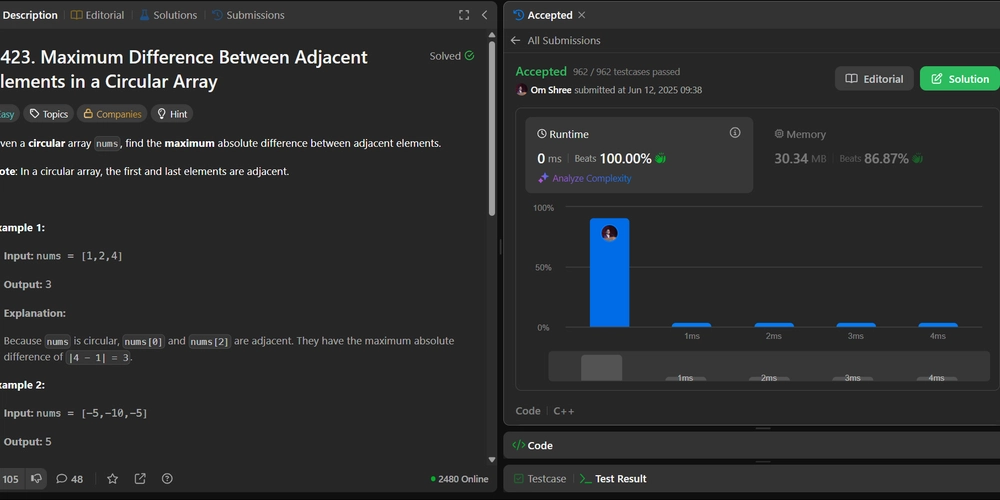











































.jpg?#)











































![MindsEye From Ex-GTA Producer Is A Day-One Car Wreck [Update]](https://i.kinja-img.com/image/upload/c_fill,h_675,pg_1,q_80,w_1200/aa09b256615c422f7d1e1535d023e578.png)






















.png?width=1920&height=1920&fit=bounds&quality=70&format=jpg&auto=webp#)





















































































































![PSA: iOS 26 Spatial Scenes will work on iPhones 12 and up [U]](https://i0.wp.com/9to5mac.com/wp-content/uploads/sites/6/2025/06/spatial-photos-ios26.jpg?resize=1200%2C628&quality=82&strip=all&ssl=1)
![Apple categorically denies Siri vaporware claims, and offers a better explanation [Video]](https://i0.wp.com/9to5mac.com/wp-content/uploads/sites/6/2025/06/Apple-categorically-denies-Siri-vaporware-claims-and-offers-a-better-explanation.jpg?resize=1200%2C628&quality=82&strip=all&ssl=1)
![This new iPad keyboard was purpose-built for versatility and portability – Logitech Flip Folio [Hands-on]](https://i0.wp.com/9to5mac.com/wp-content/uploads/sites/6/2025/06/Logitech-FI.jpg?resize=1200%2C628&quality=82&strip=all&ssl=1)
![Nothing confirms it was almost called ‘Essential’ instead [Video]](https://i0.wp.com/9to5google.com/wp-content/uploads/sites/4/2025/06/nothing-essential-3.png?resize=1200%2C628&quality=82&strip=all&ssl=1)














![Apple Shares Teaser Trailer for 'The Lost Bus' Starring Matthew McConaughey [Video]](https://www.iclarified.com/images/news/97582/97582/97582-640.jpg)








































